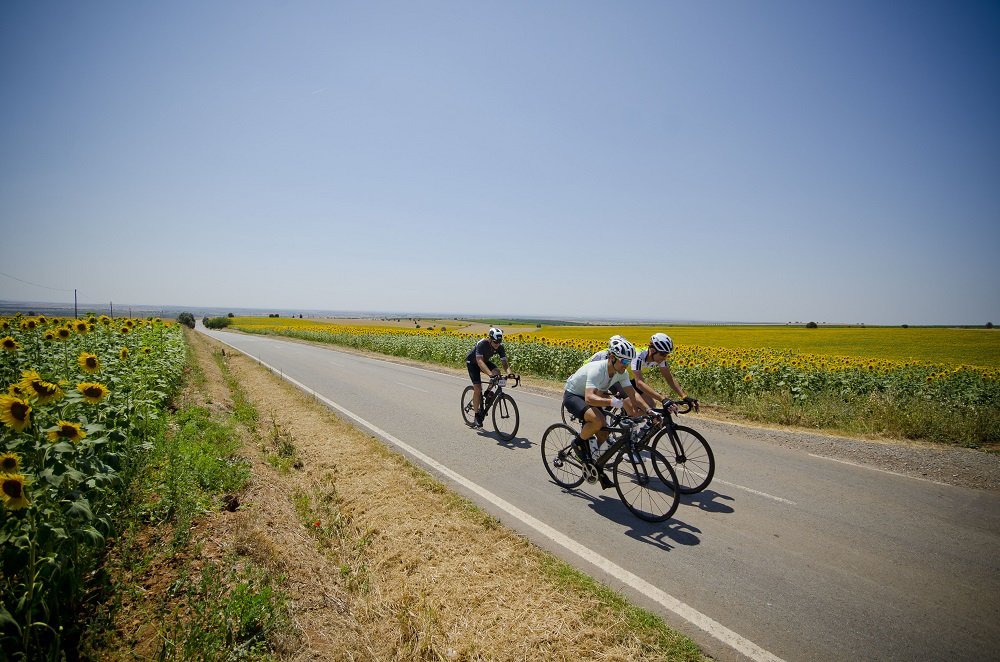Over the past decade, the Alentejo has become one of the most popular cycling destinations in Europe. The vast province makes up more than 20% of Portugal, but the reasons cyclists are heading there are many. The people are friendly and welcoming, new hotels and inns have opened across the Alentejo, the food is sublime, and the range of landscapes is impressive. But the building of new highways over the last decades has taken traffic off of older EN roads. These classic roads are often well paved, straight as an arrow, and well shaded by trees. While the Alentejo is far from flat, the vast region is mostly plains and cork forests, punctuated by olive groves, wine fields and fields of sunflowers. The rolling, open landscape, mixed with a small population of about a half million people living in a space the size of Belgium, make the Alentejo the perfect cycling destination.
Here, you can pedal across the plains from the Atlantic to the mills that flank on the border with Spain. On a bicycle, you might share the Alentejo Road with a farmer and an ox cart, or with a rider on horseback heading to town.
Today, many bicycle tour operators offer packages and support throughout the Alentejo. Experienced cyclers could certainly put together their own tours. Throughout the Alentejo, you can set your own level of adventure and tour the endless landscapes, and magical sunsets.
Making up nearly a third of Portugal, the Alentejo region is an hour from Lisbon. It flows from the Tejo River to the North with rolling plains and forests running south, then rising into mountains to the East and into the Algarve. And a long, well conserved Atlantic Coast forms the western border.
While riding across the Alentejo, you might cycle through a cork forest, and then stop to feast on smoked pata negra cured ham and some locally produced olives. You might also ride the region’s coastline roads, the Costa Vincentina, or test yourself by venturing into the mountains at the Algarve border. Along the road, you’ll see ancient dolmens, castles, Roman ruins and Moorish waterwheels. Not to mention, wineries near the towns of Reguengos de Monsaraz, Redondo, Borba and Vidigueira.
At the end of the day, you can rest your legs in one of the region’s charming inns, Pousadas, small hotels with historic significance such as a convent or a monastery. That’s all part of the charm.
* Jayme H. Simões is a travel blogger on Portugal. He grew up in Chicago, but spent summers exploring Portugal with his family.



